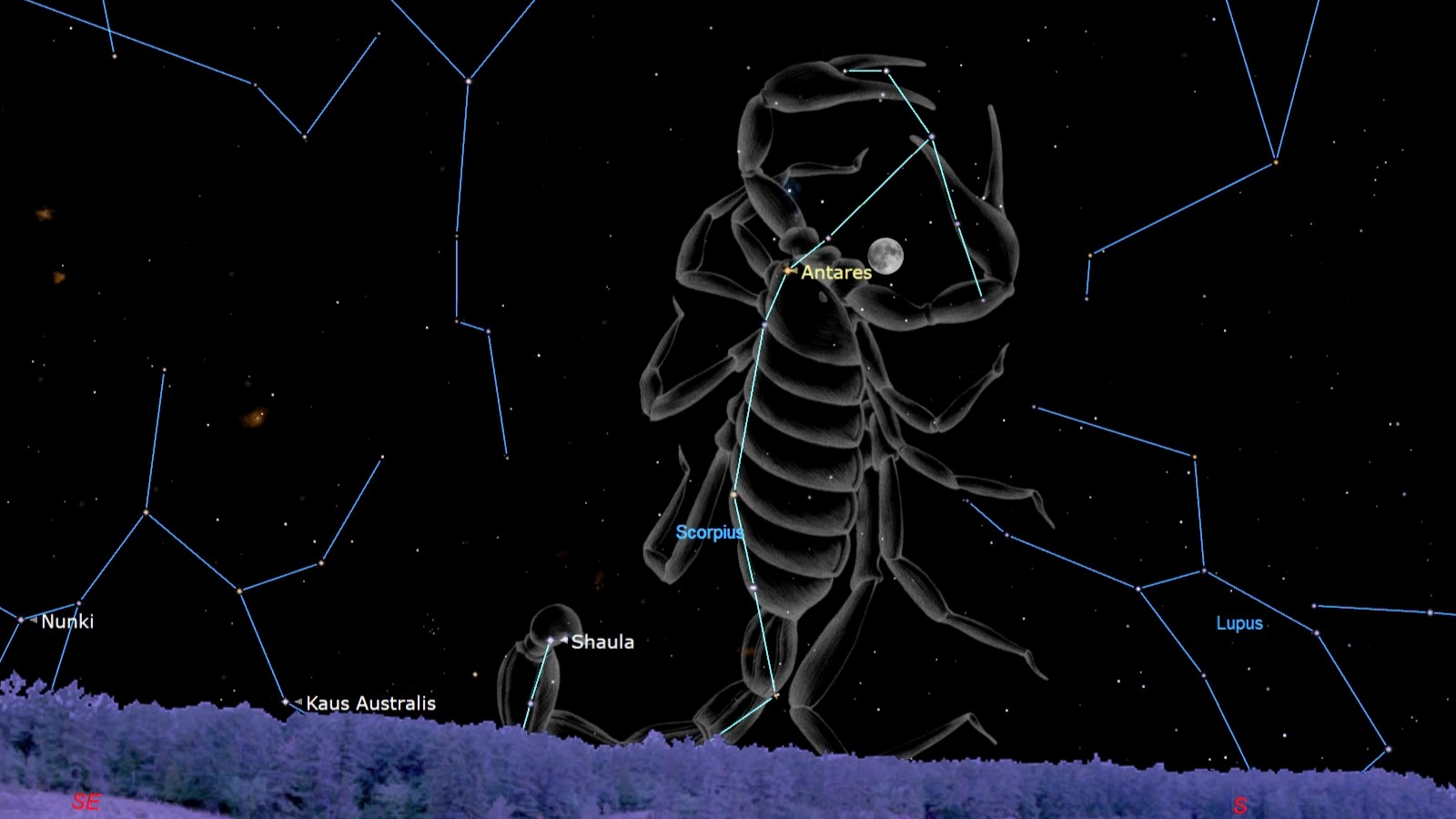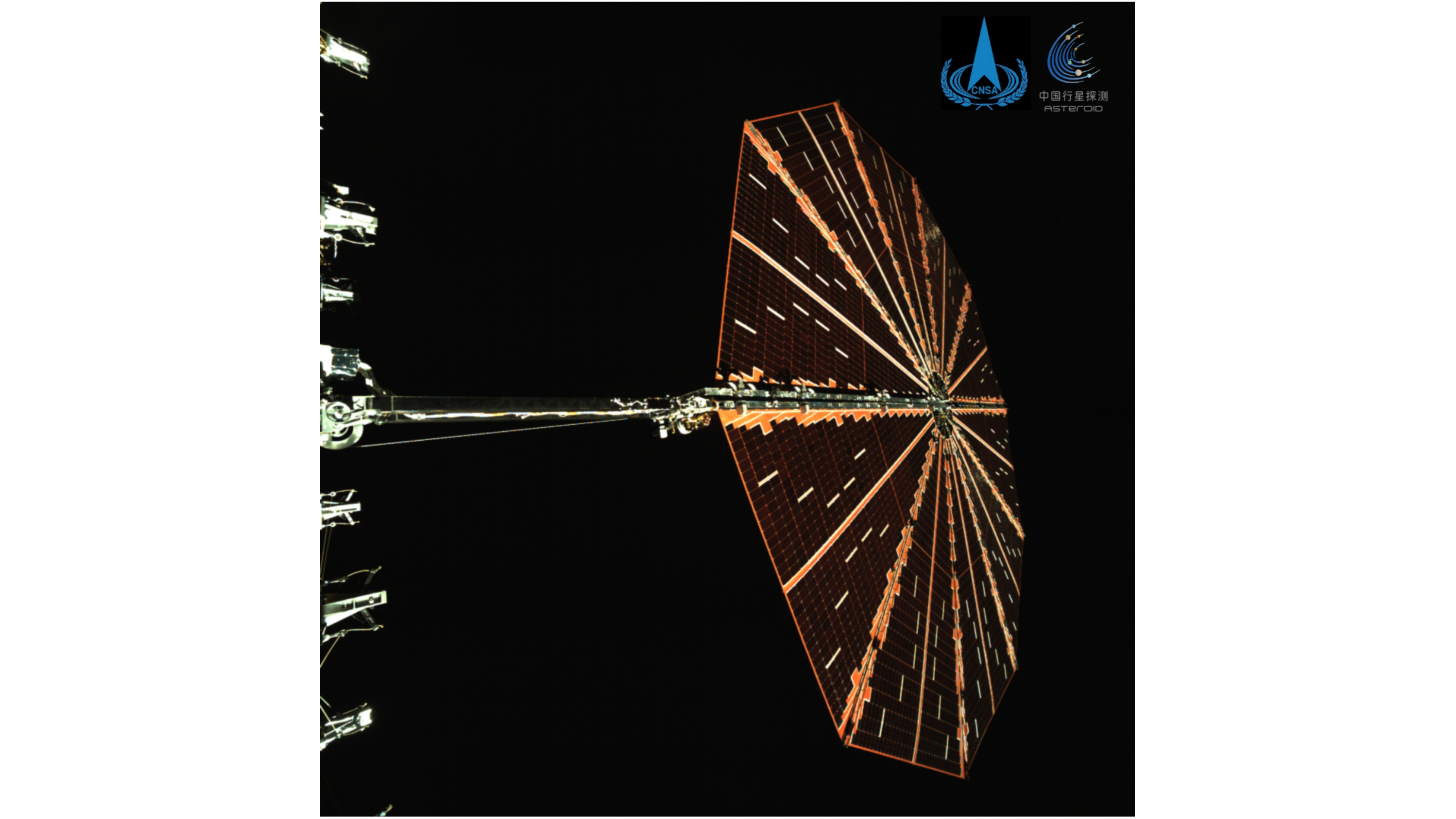See the moon shine with famous red star Antares in the southern sky on June 9
Antares is a red supergiant star located 400 light-years from Earth.

The waxing gibbous moon will shine close to the red star Antares in the constellation Scorpius on the night of June 9.
Stargazers in the U.S. will find the moon rising higher over the southeastern horizon after sunset on June 9, with Antares shining brightly around 4 degrees to the lower left of the lunar disk. For context, your little finger held at arms length accounts for roughly 1 degree in the night sky, while your index, middle and ring fingers together amount to around 5 degrees, according to NASA.
Antares is also known as the "Heart of the Scorpion" thanks to its prominent position in the zodiacal constellation Scorpius, which itself contains a number of stunning deep sky objects, such as the Messier 4 globular cluster and the closest stellar nursery to Earth — Rho Ophiuchi.
As a red supergiant, Antares boasts a diameter 700 times greater than our sun and is known to shine roughly 10,000 times brighter. It is expected to end its life in a dramatic supernova explosion when it runs out of fuel — an event that could happen anytime from tomorrow to a million years or so from now.
The lunar disk will appear to close in on Antares as the night of June 9 progresses, with the red star eventually setting above the moon's upper left shoulder as the duo slip beneath the southwestern horizon in the predawn hours of June 10.
Viewers based in a number of southern hemisphere countries, including Australia, Tasmania and Papua New Guinea, will see the moon slide directly in front of Antares, blocking its light in an event known as an '"occultation" starting at 4:47 a.m. EDT (0847 GMT), according to in-the-sky.org.
Stargazers hoping to capture the majesty of the lunar surface should check out our handy guide detailing how to photograph the moon, while those looking for a closer view of the cosmos should read our lists of the best telescopes and binoculars for exploring the night sky.
Get the Space.com Newsletter
Breaking space news, the latest updates on rocket launches, skywatching events and more!
Editor's Note: If you happen to capture a picture of the moon and Antares and want to share it with Space.com's readers, then please send your photo(s), comments, and your name and location to spacephotos@space.com.
Join our Space Forums to keep talking space on the latest missions, night sky and more! And if you have a news tip, correction or comment, let us know at: community@space.com.

Anthony Wood joined Space.com in April 2025 after contributing articles to outlets including IGN, New Atlas and Gizmodo. He has a passion for the night sky, science, Hideo Kojima, and human space exploration, and can’t wait for the day when astronauts once again set foot on the moon.
You must confirm your public display name before commenting
Please logout and then login again, you will then be prompted to enter your display name.
